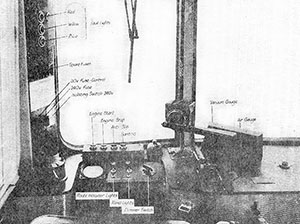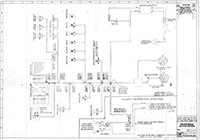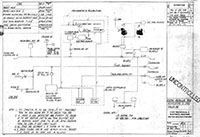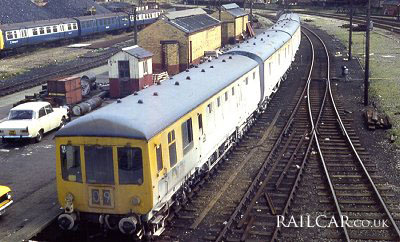Class 100 Gloucester RC&W 2-car DMUs
Fisons Weedkiller Vehicle

After 56315 has finished its livery experiments in 1974 it was bought by Fisons and moved to Glasgow Works for conversion to be the spray coach in their weedkilling train. This involved fitting it with locomotive style controls and the blue star control system to that the vehicle could drive the locomotive at the rear of the train. Some of the equipment fitted came from Clayton Class 17 locomotives. It had the first full-sized bodyside window replaced on each side with a large sliding window. Below this was the jets that strayed the weedkilling material, and in images the staff can be seen observing the spray effectiveness from the new windows. The first image by Ken Barnes shows the vehicle under conversion in Glasgow Works in March 1975 with this large window in place. Conversion work was almost complete at this stage as it moved to the Fisons base in Foxton (Cambridgeshire) at the end of the month.

The second image, taken from the driving instructions, shows the controls. The locomotive master controller is very distinct, the gear changer is gone. There's a locomotive style brake handle - and the position of the controls matches locomotives - the opposite of DMUs. Locomotive style fault lights show the condition of the locomotive, located where the air/axles lights used to be. The train carried a 240V generator for operating the weedkilling equipment, and a 110V feed was taken from this for the cab controls (this is the normal voltage for locomotive controls as opposed to the 24V used for DMUs).
The staff driving instructions are attached, an interesting point at the end of page five is that it is emphasised that the vehicle is of "alloy" construction, and the train must not be hauled by coupling onto the driving trailer. The alloy construction is obviously an error!
The two works drawings - which can be found at the bottom of the page - show the blue square control wiring, and the brake gear equipment fitted.
The rest of the formation would vary to contain either two or three pre-BR vintage coaches and three tankers to hold water that would mix with the chemicals. in 1980/1 the trains base shifted from Foxton to Chesterton Junction (also Cambridgeshire).
Initial house livery was green below the waist, yellow above (the shade matching the yellow cab), divided by a white line. The vehicle sides were normally coated in white overspay. It was designated the private owner number FA 99900.
The image shows the Fisons weedkilling at Southport on the 19th August 1980. Robert Frise. More images can be found on the vehicle's own page.
By 1986 the livery was red (bottom) and white (top), when the company was now FBC limited. By 1987 they were under the ownership of Schering Agrochemicals Ltd. and it was repainted again into an overall mid-green livery, still with a white waist band and yellow end.
Normal operation of the train seems to be with the driver trailer leading when spraying, presumably so the staff had a good view of the line ahead and could shut off or alter the spray in cases such as passing through a station. It seemed to predominately work in the Midlands / North, but also made it down as far as Exeter, and was one of three weedkilling that operated around the country. The other trains were operated by BR (NER/ER) and another privately owned by Chipmans. They continued until the 1988 season, when they were replaced by a train formed of Hunslet Barclay Class 20s with Mark 1 coaches. FA99900 went for disposal at Vic Berrys in Leicester in 1990.


An excellent article on the weedkilling trains can be found on the RCTS website.
Fisons Ltd had previously bought Class 129 parcel car 55998 in 1974 — that sale was cancelled[1]. This was presumably because 56315 was thought to be a better candidate.
References
- ⋏ 13/1974 BR Coaches Disposed Report, details from John Hall
Summary
Orders
Construction
Description
GRC&W Ads & Works Pictures
BR Diagrams & Works Pics
Numbering & Driving Instructions
Liveries
Allocations
Operations - LMR
Operations - Scotland
Operations - NER/ER
Publicity - ScR Newspaper Ads
Non-Passenger Use
Fisons Weedkiller
Images
Also relevant:-
Edinburgh Suburban timetables
Details about the preserved Class 100 vehicles can be found here.



